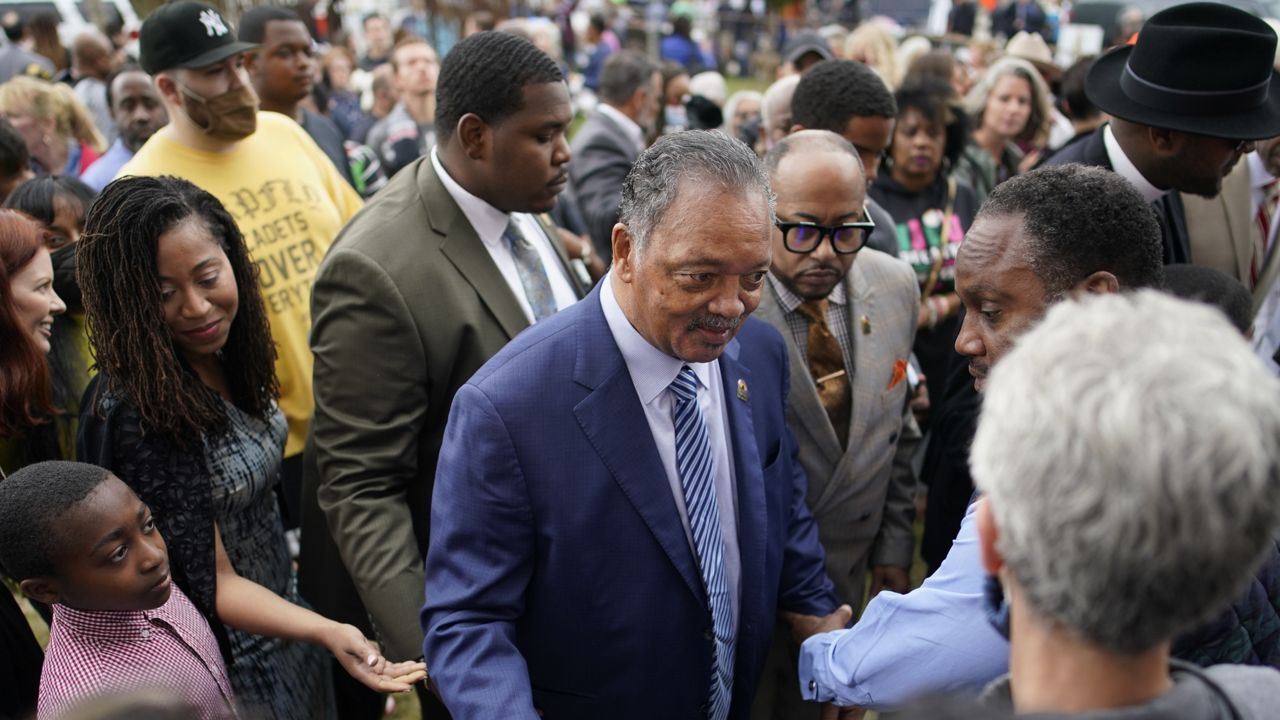Across the nation, civil rights leaders, politicians, and a handful of survivors from the Tulsa Race Massacre on Monday marked the centennial of the first day of one of the deadliest racist massacres in the nation.
Between May 31 and June 1, 1921, white Tulsa residents took to the streets armed with weapons — many of which were provided by city officials — and slaughtered Black residents.
The massacre, which is still often referred to as the worst incident of racial violence in America’s history, saw 35 square blocks destroyed, hundreds of people injured and thousands more left homeless.
The mobs also destroyed Black Wall Street, which at the time was a thriving business district and one of the wealthiest Black neighborhoods in the country. Estimates of the death toll range from dozens to 300.
In Tulsa’s Greenwood neighborhood, a group of hundreds gathered for an interfaith service dedicating a prayer wall outside the historic Vernon African Methodist Episcopal Church.
National civil rights leaders, including the Revs. Jesse Jackson and William Barber, joined multiple local faith leaders offering prayers and remarks outside the church that was largely destroyed when a white mob descended on the prosperous Black neighborhood in 1921.
Barber, a civil and economic rights activist, said he was “humbled even to stand on this holy ground.”
“You can kill the people but you cannot kill the voice of the blood.”
Although the church was nearly destroyed in the massacre, parishioners continued to meet in the basement, and it was rebuilt several years later, becoming a symbol of the resilience of Tulsa’s Black community. The building was added to the National Register of Historic Places in 2018.
President Joe Biden is set to visit Tulsa on Tuesday to commemorate the 100th anniversary of the massacre.
On Monday, the president declared May 31, 2021 a day of remembrance for the massacre, writing that the government is “reaffirming our commitment to advance racial justice through the whole of our government, and working to root out systemic racism from our laws, our policies, and our hearts.”
Biden was invited to attend a memorial event on Monday, which was set to include keynote speech from former Georgia gubernatorial candidate and voting rights advocate Stacey Abrams and a performance by singer John Legend at Tulsa’s ONEOK Field in the historic Greenwood district. But that event was scrapped late last week after an agreement couldn’t be reached over monetary payments to three survivors of the deadly attack, a situation that highlighted broader debates over reparations for racial injustice.
Several events on Sunday featured those last three known living massacre survivors — 106-year-old Lessie Benningfield Randle, 107-year-old Viola Fletcher, and 100-year-old Hughes Van Ellis.
In mid-May, the three gave testimony in a panel about the massacre in the U.S. House of Representatives in an effort to push for compensation for survivors, their descendants, and the greater Black Tulsa community as a whole.
In moving and often heart-wrenching testimony, the three survivors described the lasting impact the massacre had on their families.
“I will never forget the violence of the white mob when we left our house,” Fletcher said in her opening statement. “I still see Black men being shot, and Black bodies lying in the street. I still smell smoke and see fire. I still see Black businesses being burned. I still hear airplanes flying overhead. I hear the screams. I live through the Massacre every day.”
Fletcher went on to say that the subcommittee has the power to “lead us down a better path,” telling members: “I am asking that my country acknowledge what has happened to me. The trauma. The pain. The loss. And I ask that survivors and descendants be given a chance to seek justice. Open the courtroom doors to us.”
"It means a lot to me to finally be able to look at you all in the eye and ask you to do the right thing," Randle told the committee, testifying virtually. "I have waited so long for justice."



